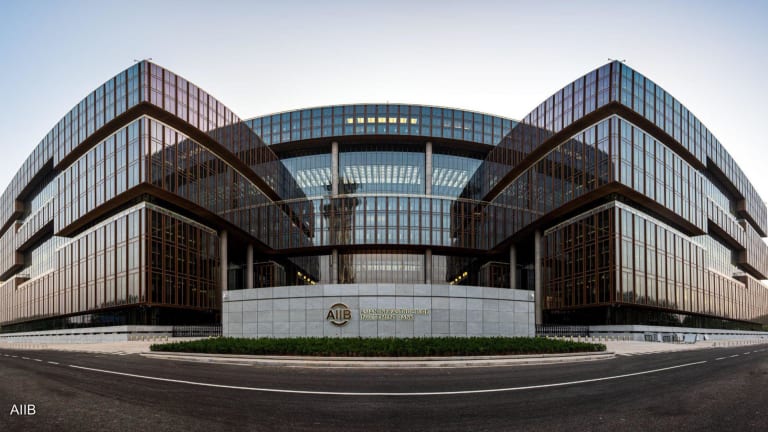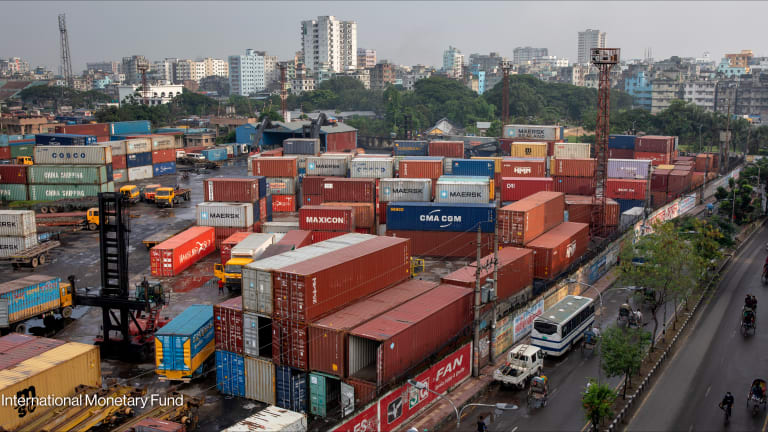How the European Commission spends its aid money
The European Commission's Directorate-General for International Partnerships has committed $55.7 billion to projects ongoing in 2022. Devex looked into the data.
The European Commission is one of the largest funders in international development. But where does it spend its aid? The commission’s own publicly published data on its activities is not comprehensive, so to find out more, Devex turned to information from the International Aid Transparency Initiative, or IATI, which collects comprehensive data reported by different aid institutions. We looked at projects reported by the European Commission’s Directorate-General for International Partnerships, or DG INTPA, with a cutoff date of the end of 2022. Because of how IATI data is recorded, our data set includes any project active at any point in 2022 — including some starting as far back as 2001 — and any project with a projected start date in 2022. This amounts to 8,987 activities, worth $55.7 billion. Overall, the commission has already disbursed $28.9 billion out of this total commitment. IATI data is much more detailed than the data recorded elsewhere, and therefore it presents an in-depth picture. Because the data requires many individuals to update the site with accurate information about projects, the accuracy of all information cannot be guaranteed, however it is regarded as relatively reliable. Publish What You Fund, an independent scrutiny organization which uses IATI data to scrutinize aid efficiency, awarded DG INTPA a good score in its Aid Transparency Index, saying it ranked 15th out of the 50 institutions scrutinized. How many projects has DG INTPA committed to? Out of the total activities reported, 5,362 of these are still in implementation, 2,836 in finalization — which refers to the projects that have either been physically completed or where the overall disbursement has been made. The remaining 789 activities are in pipeline status. Projects under the pipeline status all have a no monetary commitment as of writing. The biggest commitment is $2.9 billion for the commission’s Common Provisioning Fund, or CPF, which provides funding for financial guarantees and budget support. As of writing, the commission has disbursed $954 million out of the total. This activity is projected to last until 2027. The next largest project is a $979.9 million commitment to the Action Program of the African Peace Facility. Third is a $790.9 million commitment to investments in regional infrastructures dedicated to the sub-Saharan region. Currently, there are no disbursements made for both activities. Where has DG INTPA committed the most money to? Within the dataset, a large number of activities are tagged as “Developing countries, unspecified.” It is this group which has garnered the most commitments from DG INTPA, with $11.2 billion for 622 activities. These activities may include projects that are to be executed within the commission’s headquarters or in multiple countries all over the world. In terms of commitments, DG INTPA has committed the most to the Democratic Republic of Congo with 194 activities worth $1.4 billion overall. Of these projects, 117 are currently in implementation. However, only $490.3 million has been spent on the country so far. Following DRC is Mozambique with 154 activities worth $1.4 billion, 116 of which are in implementation, and the remainder of which are in the finalization stage. Next is Niger with $1.1 billion for 142 activities that range from projects still in the pipeline, to implementation phase, and to finalization, then Bangladesh with $1 billion, and Nigeria, also with $1 billion. DG INTPA also commits significant funding to regions rather than countries. Regional funding was mainly focused on the African continent, and specifically, the south of Sahara region. $3.8 billion was committed to the region alone. DG INTPA also funded other regions, such as Latin America and the Caribbean with $490.1 million and Asia with $862 million. What are DG INTPA’s sectoral priorities? Many projects are tagged as belonging to multiple sectors. These multisector projects ranked first in the list of sectoral priorities, with $2.9 billion in commitments. Another $2.5 billion was committed to 124 instances of general budget support. This sector mainly refers to DG INTPA’s unearmarked contributions to governments or general budgetary support for programs that cannot be allocated by sector. Road transport comes next with 167 projects worth $1.7 billion. Agricultural development follows with 225 activities worth $1.5 billion, then COVID-19 control with only 17 activities and $1.4 billion in commitments. Education policy and administrative management, the sector that mainly includes support to education ministries and school governance, has $1.4 billion in commitments for 107 activities. Try out Devex Pro Funding today with a free five-day trial, and explore funding opportunities from over 850 sources in addition to our analysis and news content.
The European Commission is one of the largest funders in international development. But where does it spend its aid?
The commission’s own publicly published data on its activities is not comprehensive, so to find out more, Devex turned to information from the International Aid Transparency Initiative, or IATI, which collects comprehensive data reported by different aid institutions.
We looked at projects reported by the European Commission’s Directorate-General for International Partnerships, or DG INTPA, with a cutoff date of the end of 2022. Because of how IATI data is recorded, our data set includes any project active at any point in 2022 — including some starting as far back as 2001 — and any project with a projected start date in 2022.
This story is forDevex Promembers
Unlock this story now with a 15-day free trial of Devex Pro.
With a Devex Pro subscription you'll get access to deeper analysis and exclusive insights from our reporters and analysts.
Start my free trialRequest a group subscription Printing articles to share with others is a breach of our terms and conditions and copyright policy. Please use the sharing options on the left side of the article. Devex Pro members may share up to 10 articles per month using the Pro share tool ( ).
Alecsondra Si is a Junior Development Analyst at Devex. She analyzes funding data from bilateral and multilateral agencies, foundations, and other public and private donors to produce content for Devex Pro and Pro Funding readers. She has a bachelor’s degree in International Studies - major in European Studies from De La Salle University, Manila, Philippines.








